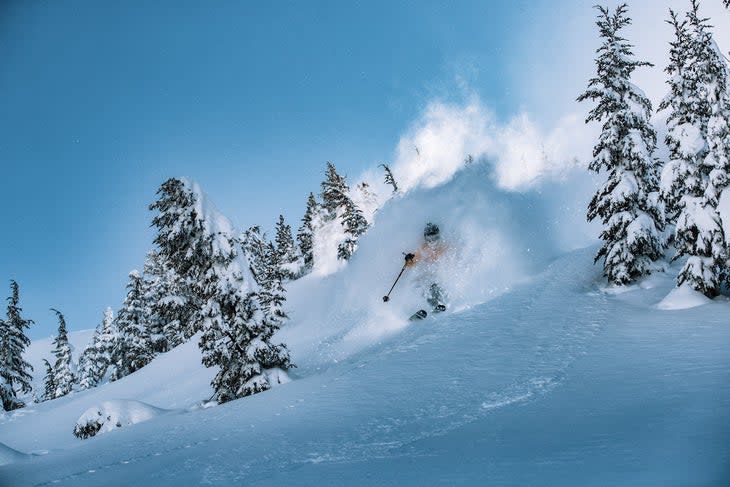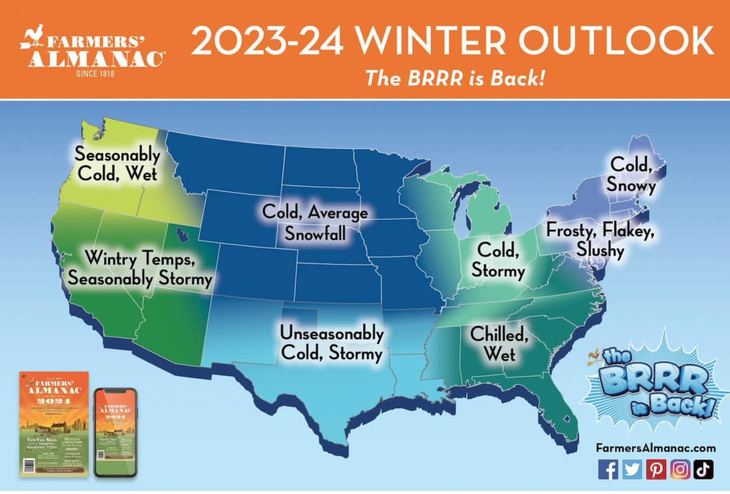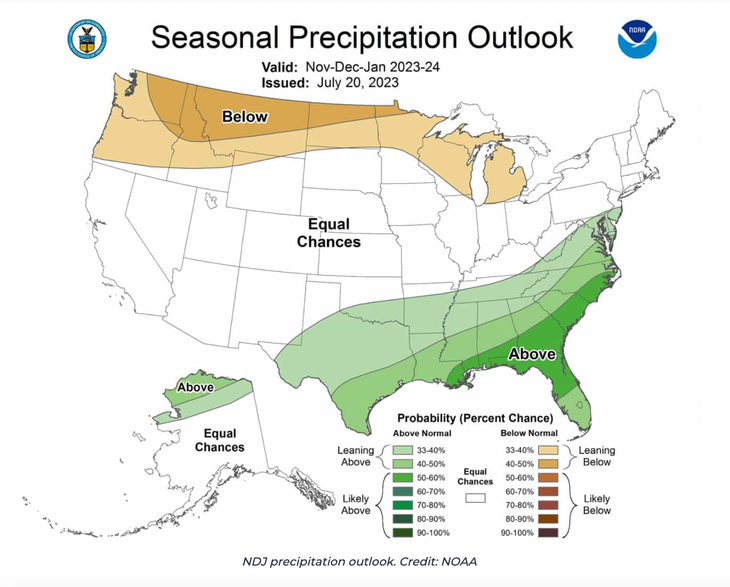All Signs Point to a Strong El Niño Winter—Here’s What That Means By Region
This article originally appeared on Ski Mag
It's August, meaning it's time for all of the weather geeks to sound off on what this ski season might have in store for us, precipitation-wise. Are they typically correct? Well, it's August, so who knows, but it sure is fun to ruminate on, and definitely helps get us amped for the season.
So, in the spirit of building stoke, we examined what three of the big forecasting houses have to say about the 2023-'24 winter season across North America. When it's all said and done, we'll circle back to fact-check their accuracy, like we did this past season. In the meantime, we hope this gets you daydreaming about deep days at your favorite resorts.
Open Snow
According to Open Snow, a three-year La Nina streak is about to break, ushering in an El Nino winter this season. (Weather geek note: An El Nino occurs when sea-surface temperatures across the central and eastern equatorial Pacific rise a half-degree from the month prior for five consecutive three-month periods.) The phenomenon began this past spring, has continued through the summer, and, according to the National Atmospheric and Oceanic Administration, is almost certain to stick around for the winter.
What's more, this season is looking to be a strong El Nino, which has only occurred seven times since 1950. The last one was in 2015-'16, when the snow came later but copiously during what was categorized as a warm El Nino winter.
So where can we expect the best goods? Historically, the Southwest, California, the Pacific Northwest, and British Columbia has benefited most from a strong El Nino. In other words, it could be another banner season for Mammoth and the Tahoe resorts.

In the Rockies, it's a bit of a mixed bag. El Nino has been known to produce drier conditions in the Northern Rockies and snowier results in the Southern Rockies. This could be a great year to hit Taos Ski Valley, N.M. and the resorts of Southern Colorado, including Telluride and Purgatory.
One of the most confusing things about an El Nino year is that it tends to produce higher temperatures in addition to the increased precipitation, which is why it could either be a boon or a bust for New England. The lower elevations of the ski resorts could result in more rain than snow, depending on the temperature threshold.
Farmer's Almanac
The 200-plus-year-old publication originally aimed toward agriculturists also calls for an El Nino year, but says that it will bring on a snowier and colder winter across the country. Like Open Snow, the Almanac says that the Southwest and California will make out exceptionally well. It also predicts that January and February will bring consistently cold and snowy conditions to New England and the Midwest, and to also expect late-spring snow at higher elevations.

In the Rockies, the Almanac calls for a more traditional winter, snowfall-wise, especially in the Northern Rockies, and agrees with Open Snow that the Southwest will be wetter and snowier than usual.
NOAA
As mentioned above, the government agency in charge of climate monitoring and all things forecasting predicts that the current El Nino pattern will continue into winter. For what it's worth, NOAA was the first in the bunch to proffer its winter predictions back on July 20.
NOAA breaks things down into two categories: temperature and precipitation. Regarding temps, NOAA says to expect higher than normal temperatures in the northern portion of the country as well as in the East, and a pretty average winter, temperature-wise, in pretty much all other portions of ski country. Pretty unexciting, we admit.

As for precipitation, NOAA's forecast remains underwhelming, with below-average snowfall in the Northern Rockies and average numbers across the middle of the country from coast to coast. The only spots that might see higher precipitation, be it rain or snow, is the Mid-Atlantic and the Southeast, as well as northern Alaska. Sigh.
Of course, while all of this is based in science, it's a pretty subjective science that seems to get it wrong as often as it's right. In other words, take it all with a grain of salt. Or should we say, a flake of snow…
For exclusive access to all of our fitness, gear, adventure, and travel stories, plus discounts on trips, events, and gear, sign up for Outside+ today.

